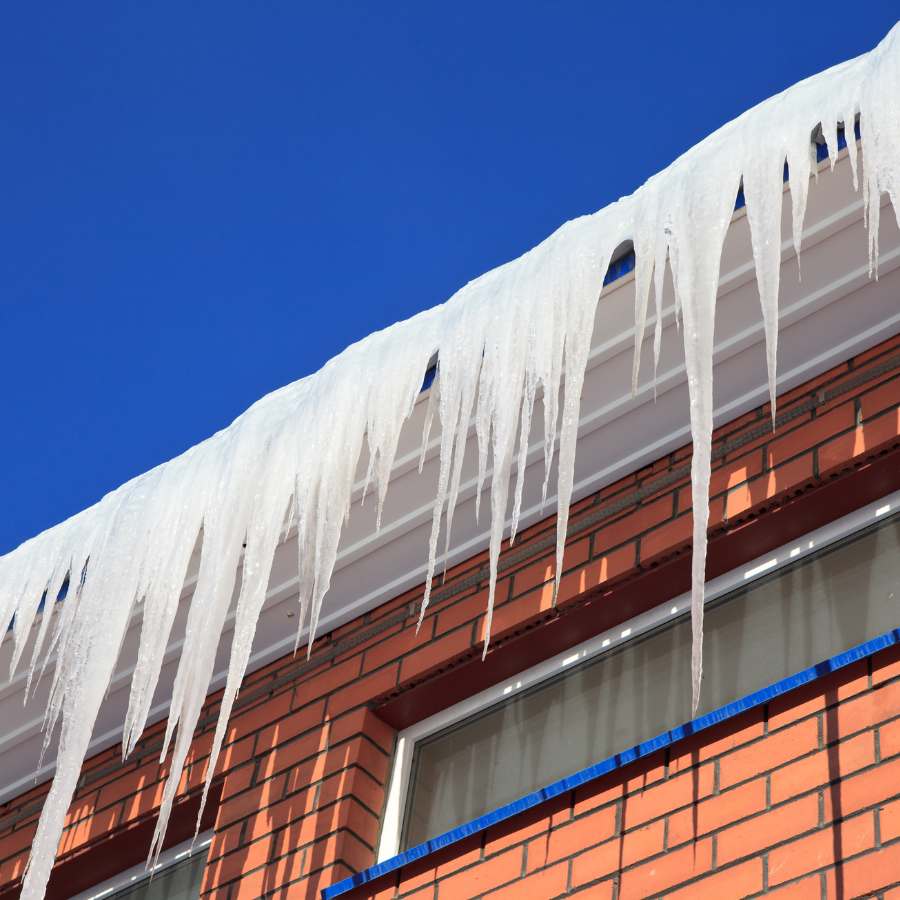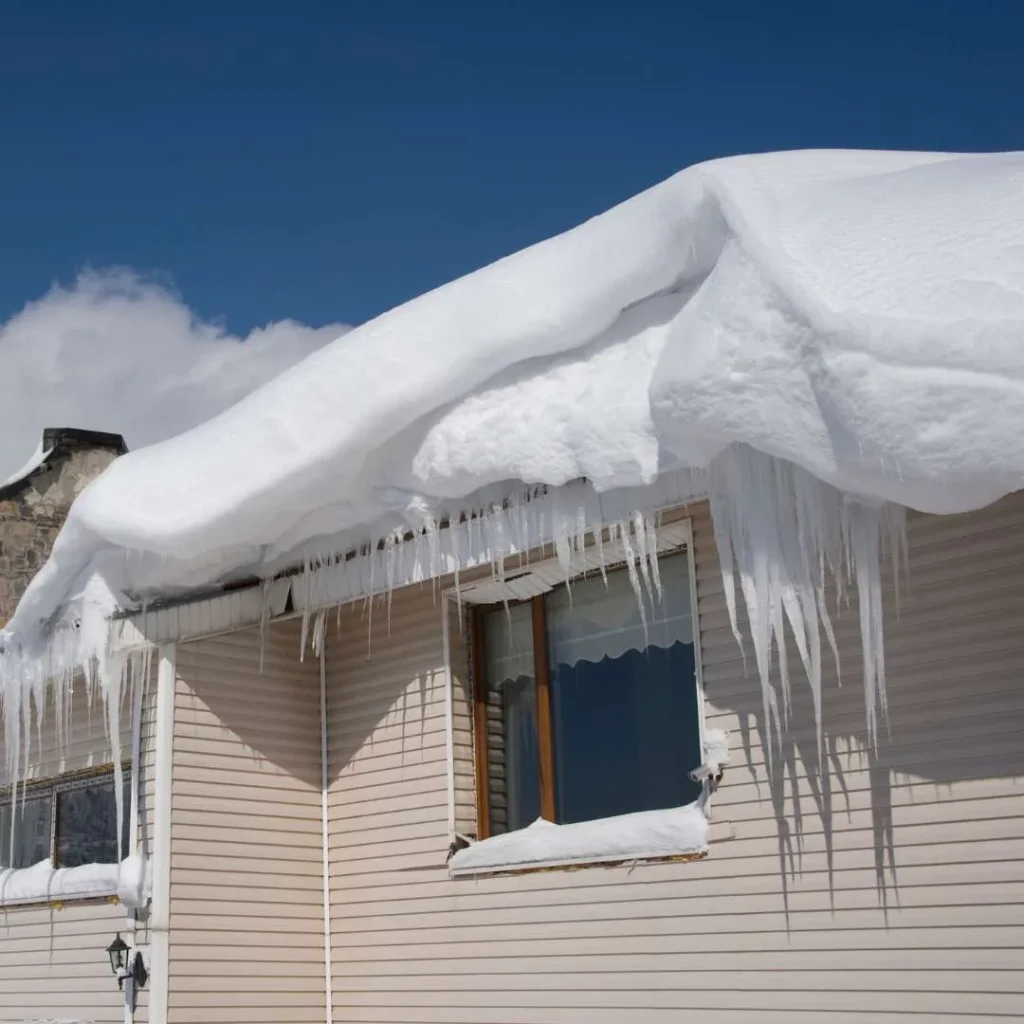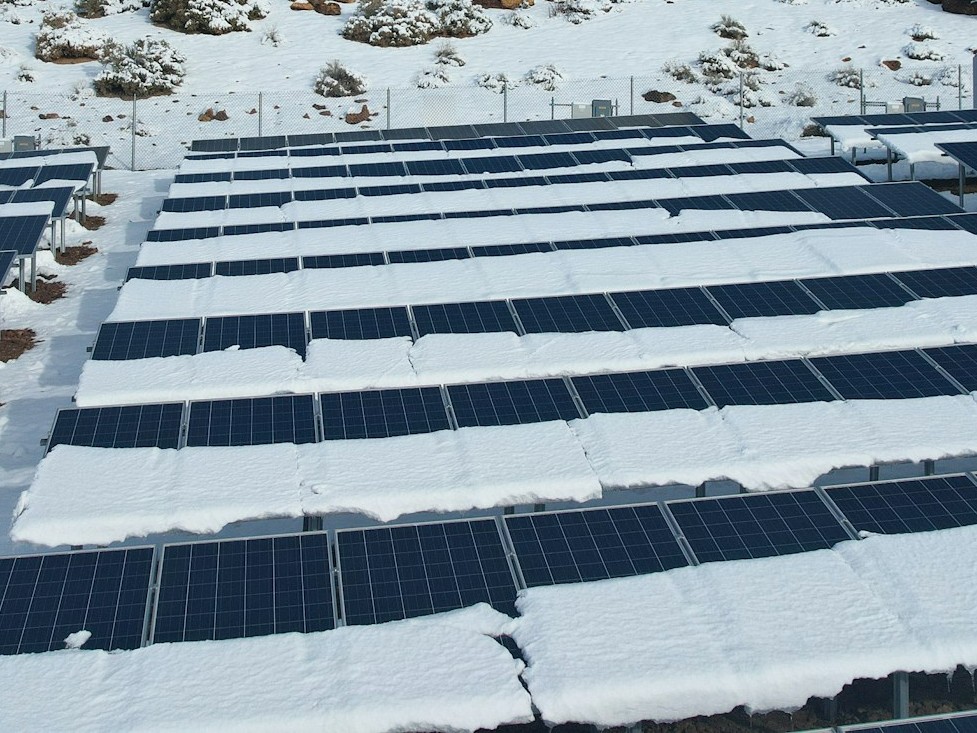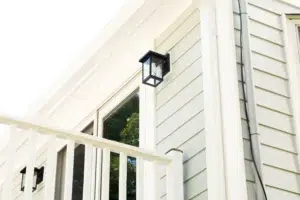Is Ice Melt Safe For Roofs?
Using ice melt on your home’s roof may seem like a quick fix, but it’s actually risky for several reasons. Our answer to “Is Ice Melt Safe For Roofs?” comes with important cautions and a clear explanation of why applying ice melt directly to your roof can do more harm than good.
Use caution when selecting ice melt
After a heavy snow, a serious build up of ice can occur – and it’s not uncommon for a homeowner to wonder, ‘Is Ice Melt Safe For Roofs?’ before taking action.

There are various kinds of ice melts that are generally available to consumers and not all are created equal. The chemicals are designed to melt the ice, but some are not safe for pets or plants in the area. It can corrode or stain your roofing and siding components. Some are only effective at certain temperatures.
In general, magnesium chloride or calcium chloride can perform well at lower temperatures, but there is a risk of staining your roof and siding. These chemicals could also corrode your gutters, siding, and other metal components, especially if you need large quantities of ice melt to do a sufficient job.
It’s best to avoid rock salt (sodium chloride) because it only works down to 20 degrees, can leave a white residue, is harmful to nearby plants and vegetation, and could potentially damage your shingles.
The downsides to using ice melt on your roof are:
- You may need large quantities to actually melt the ice
- It can be dangerous for a homeowner to get up on a ladder to apply it
- The ice melt itself may damage, stain, or corrode your roof or siding
- Ice melts can be toxic to pets and nearby vegetation
Prevent ice dams by ensuring proper attic insulation and ventilation
Thankfully, there are some steps that homeowners can take to protect their home from ice dams in the first place. It helps to understand why ice dams form, and what to do to prevent them.
Ice dams occur when there is a pack of snow on the roof and the attic is warm. When the warm air leaks from the attic, it can melt the bottom layer of snow on the roof. This melted snow drips down the slope of the roof until it hits the roof edge or the gutter, which are often colder than the insulated warm area under the snow pack. The melted water refreezes at the roof edge or gutter, resulting in an ice dam.
Keeping your attic properly ventilated can allow the cooler winter air to enter and flow through your attic. The attic should also be sufficiently insulated. This prevents the indoor warm air from leaking into your attic (and heating it up). Golden Group roofing is happy to do an inspection of your roofing ventilation system to see what improvements could be made.
Is Ice Melt Safe For Roofs?
Ice melt contains chemicals that are designed to melt the ice but may be unsafe for pets or plants. Pets can bring the chemical into your home on their paws, which can be toxic if they lick their paws. Some chemicals will do damage to your plants as the ice melts and falls from the roof.
Ice melts can stain or even corrode the roof material, gutters, downspouts, fasteners, and siding. Some may only be effective at certain temperatures. For example, magnesium chloride or calcium chloride only perform well at lower temperatures and the risk of damage is real. Sodium chloride, known better as “rock salt,” only works down to 20 degrees and can leave a white residue. It is harmful to plants and can damage shingles. Once the chemical runoff reaches the ground, it can seep into ground water and cause environmental issues in the water supply.
Ice melt can cause granular loss
Granules are little pieces of asphalt embedded in asphalt shingles that are responsible for the fire resistance, color, and UV ray protection of the roof. Granules ensure the longevity of an asphalt shingle roof.
When asphalt shingles start to lose their protective granules, the condition is referred to as “granular loss.” Losing granules is a natural progression as a roof ages. However, granular loss can be caused by other situations, like hail damage, a storm causing a tree to fall on the roof, power washing, improper installation, and using ice melt — another reason why homeowners often ask ‘Is Ice Melt Safe For Roofs?
What does granular loss mean for your roof?
If your roof has sustained heavy granular loss, it is an indication that you need to replace the roof. This is especially true when your roof gets to around 20-years old. Granular loss over time is natural, but you do not want to speed up the natural process by using chemicals on the roof that can cause granular loss. In addition, using ice melt that causes damage to your roof can void your roof warranty and insurance claims.
Is Ice Melt Safe For Roofs? A Short-Term Solution At Best
The crucial reason why ice melt is not the treatment to rid your roof of snow and ice … and prevent ice dams from forming … is that ice melt is only a short-term solution. Chemicals can melt ice, but once temperatures fall (at night especially), the ice forms again and this cycle of freezing, thawing, and freezing again is damaging to your roof, leading to high repair costs.
Safer alternatives to using ice melt
There are other ways to remove snow and ice from your roof. A roof rake can safely pull snow from the roof, if done from the ground or on a stable ladder with a buddy to hold it steady.
You can have heated cables or heat tape installed on your roof to melt the snow electronically. A professional service can also removal snow and ice using steam.
The real solution to preventing ice dams
Prevention is the answer. Ensuring proper attic insulation and ventilation is key to protecting homes from ice dams in the first place. To understand why this is so, it is better to learn why and how ice dams form and what to do to prevent them.
What exactly is an ice dam?
Ice dams occur when there is a pack of snow on the roof, and the attic is warm. When the warm air leaks from the attic, it can melt the bottom layer of snow on the roof. This melted snow drips down the slope of the roof until it hits the roof edge or the gutter, which are often colder than the insulated warm area under the snow pack. The melted water refreezes at the roof edge or gutter, resulting in an ice dam.

How can ice dams be prevented?
Proper ventilation means that there is air flow in and out of the attic.
Keeping your attic properly ventilated can allow the cooler winter air to enter and flow through your attic. The other side of the equation is insulation. Proper insulation prevents the indoor warm air from leaking into the attic and heating it up so that the cycle of thawing the underlayer of snow and ice, causing the melted snow to run down to the roof edges and gutters … and the ice dam begins to form.
Golden Group Roofing recommends an attic ventilation upgrade if you are plagued by ice dams or want to permanently prevent them from forming during one of our harsh New England winters. An ice and water shield underlayment on the roof is an excellent approach when replacing your roof. Our experts can recommend professional design improvements that can include ridge vents and drip edges, for example.
What type of ventilation is best?
There are both passive and active ventilation methods. Passive roof ventilation uses the wind to move air through and out of the attic without electricity. The natural movement of air creates ventilation. Passive roof vents are usually less expensive than active ones and do not need solar energy or electricity to work. They prevent drafts, control attic temperature, and lower energy costs. Having fewer moving parts, passive ventilation components require little maintenance.
Active roof ventilation uses fans or turbines to create air movement regardless of wind or weather conditions. Complex structures can combine passive and active ventilation systems for best results.
Active ventilation systems create a vacuum in the attic, pulling in fresh air, keeping it at the right temperature and eliminating drafts. Active vents help control moisture, mold and mildew. The choice of passive or active ventilation depends on the size of the house, budget, and your visual design preferences.
Selecting a vent type
There are many types of vents for passive and active ventilation systems. Whatever you select, you want to be sure that you have the same number of intake and exhaust vents for a balanced ventilation system. You also need to ensure that you choose vents that work well together. The types of vents include:
- Soffit or eave vents
- Gable vents
- Ridge vents
- Wind and turbine vents
- Solar powered vents
- Louver vents
- Fascia vents
- Cupola vents
Each vent type either removes old, stale air from the attic space (exhaust) or pulls in fresh air into the attic and home (intake). Learn more about proper roof ventilation and the various types of vents.
When considering a new or upgraded ventilation system, it is essential to consult with a professional, experienced roofing specialist.
Contact us for a ROOFING quote today!
Call Golden Group Roofing for Professional Ice Dam Removal
Your best bet is to call roofing professionals to handle the ice dam safely. We are fully trained and insured and know how to remove ice dams without damaging your roofing shingles, gutters, or other components.
We have a fully trained team of experienced roofers available all year round – even in the middle of winter. Call us for any ice dam removal or necessary roof repairs. We service Worcester, Middlesex, and Suffolk County communities of Massachusetts. Book online or call (508) 873-1884 to speak to our roofing team.
Frequently Asked Questions
Is Ice Melt Safe For Roofs?
Not entirely. While it can melt ice, it can also corrode roofing materials, damage shingles, harm vegetation, and potentially void your roof warranty. Safer alternatives like proper attic insulation, roof rakes, and heated cables are recommended.
Can calcium chloride damage roofs?
YES. Magnesium chloride and sodium chloride (rock salt) can also damage roofs and/or cause discoloration.
Will using ice melt void my roof warranty?
It can if the ice melt causes damage to your roof. Your warranty can be voided and roof repairs may not be covered by insurance.
What is the best way to remove ice dams without ice melt?
Have a professional remove the ice dam with steam. For a permanent solution, have your attic inspected to determine if the insulation and ventilation is adequate to prevent the freezing, thaw, re-freezing cycle that encourages ice dams to form.
Why do ice dams keep coming back?
Poor attic insulation and ventilation cause the freeze, thaw, re-freeze cycle that encourages ice dams to form. Have your attic inspected to determine if an attic upgrade is needed.
Is there a safer alternative to using ice melt?
You can use a roof rake from the ground or with a buddy to hold a ladder steady. You can also consider having heated cables installed on your roof to melt the snow electronically. A professional service can remove the snow with steam.
How do I choose the right ventilation system?
There are both passive and active ventilation systems and several types of vents. The final choice depends on several factors, including the shape and style of your roof. Learn more about ventilation here.
Where is Golden Group Roofing located?
Golden Group Roofing has offices in Westborough, Lexington, Hingham, Hudson, Bedford, and Harvard. We serve clients in the Greater Boston area, including Lexington, Hudson, Winchester, Bedford, Lincoln, Wellesley, Newton, Dedham, Needham, Hopkinton, Westborough, Southborough, and Harvard, MA.
If you have questions about your attic insulation and ventilation or you want to schedule an attic inspection, call Golden Group Roofing at (508) 873-1884 to speak to a member of our roofing team or book an appointment online.






